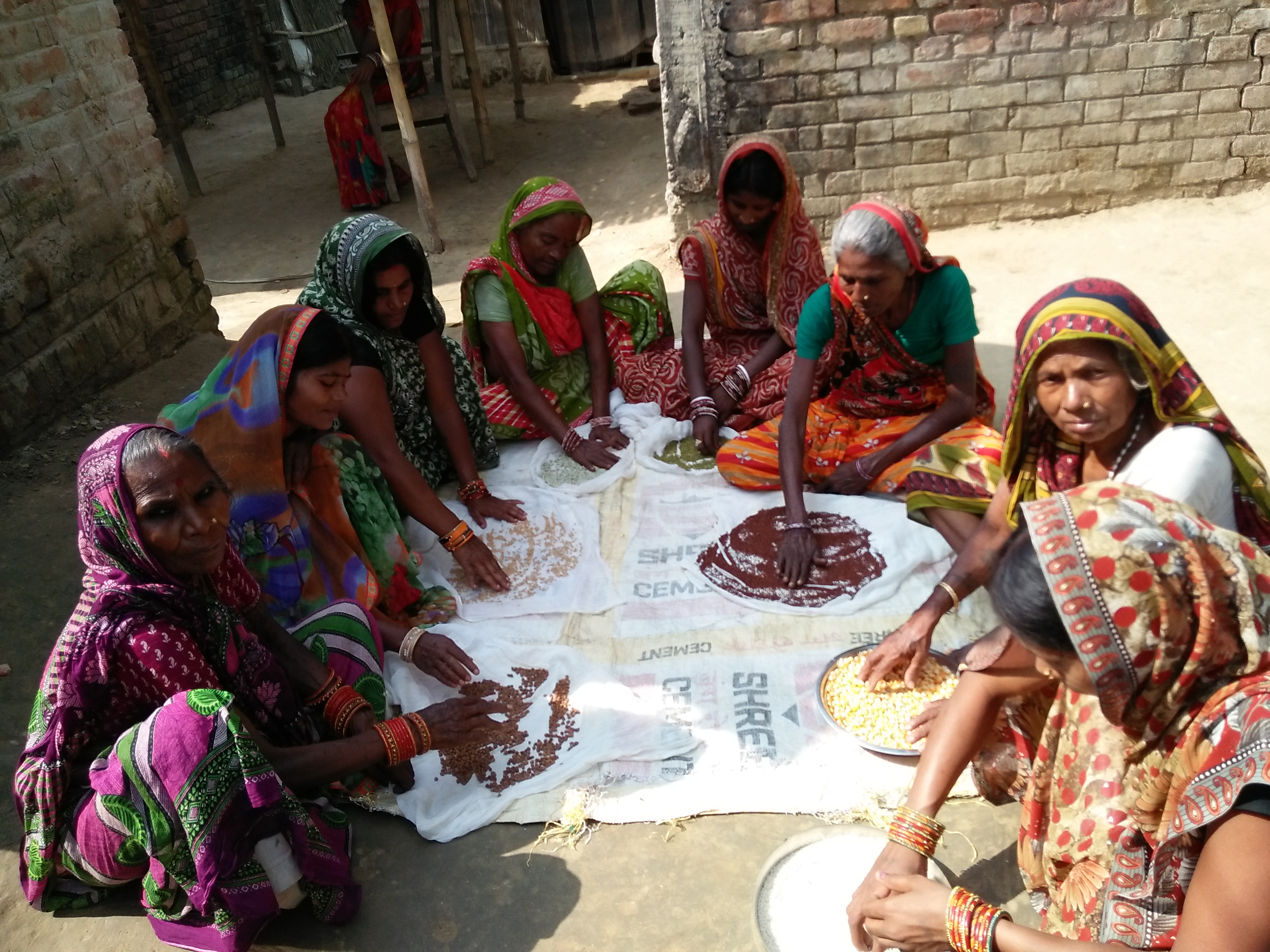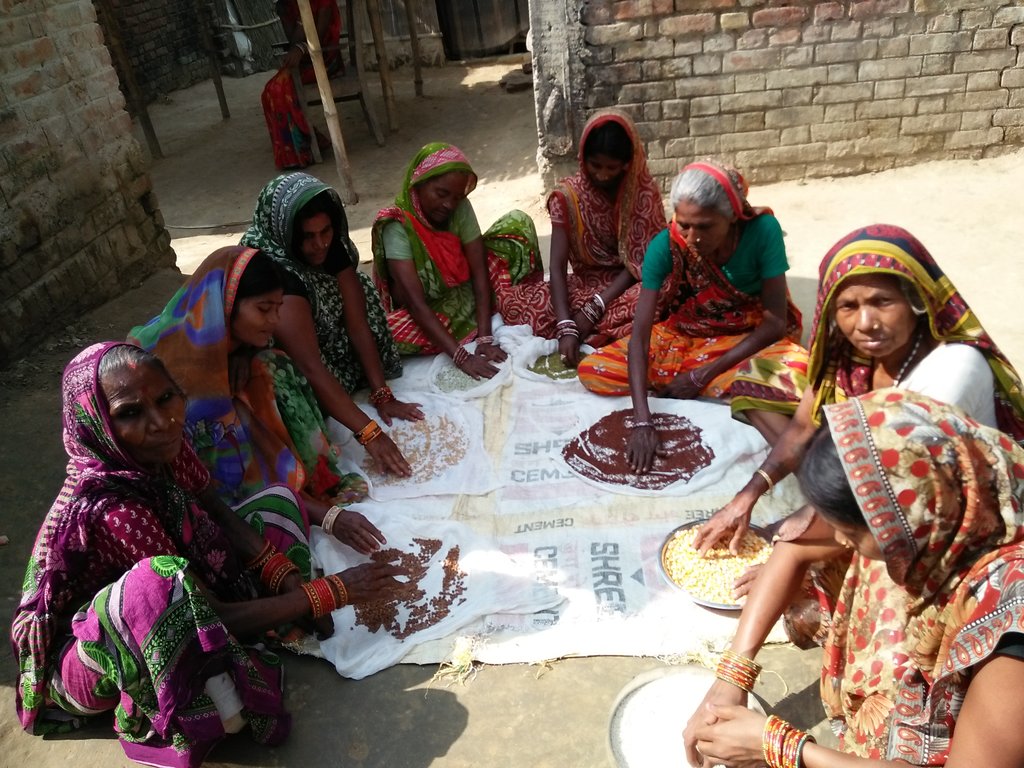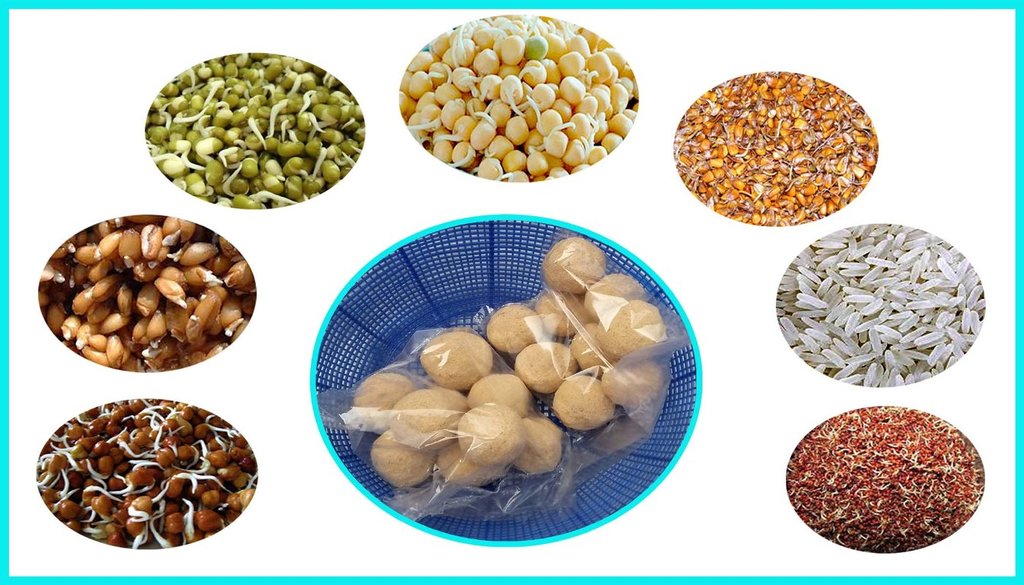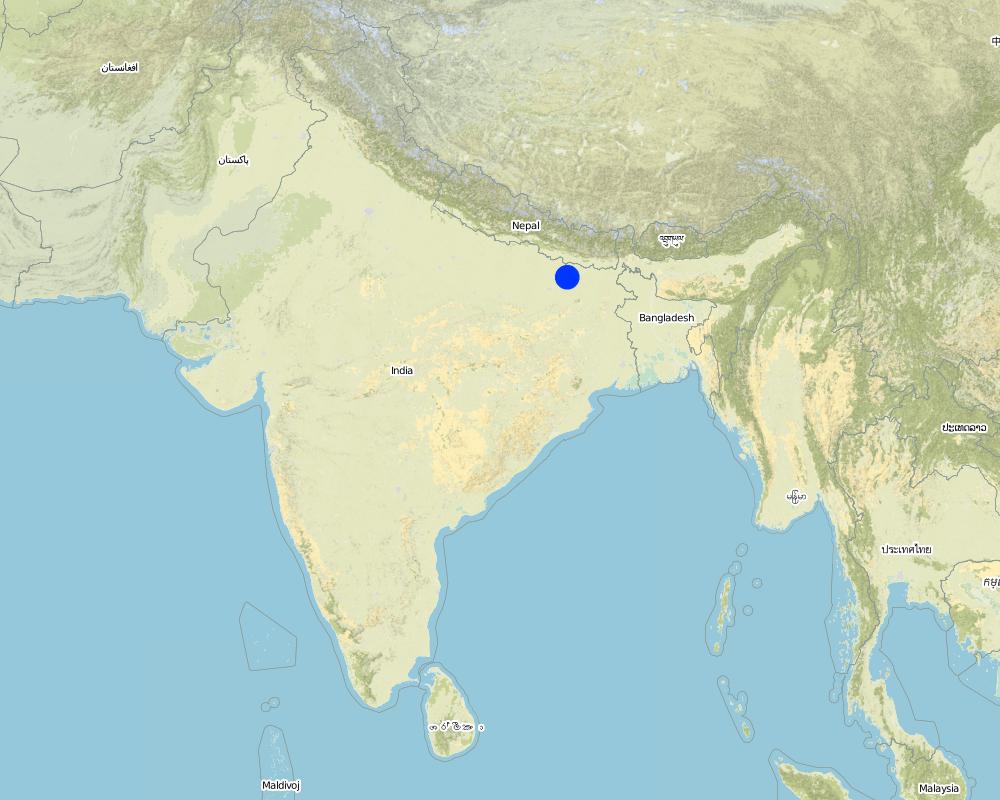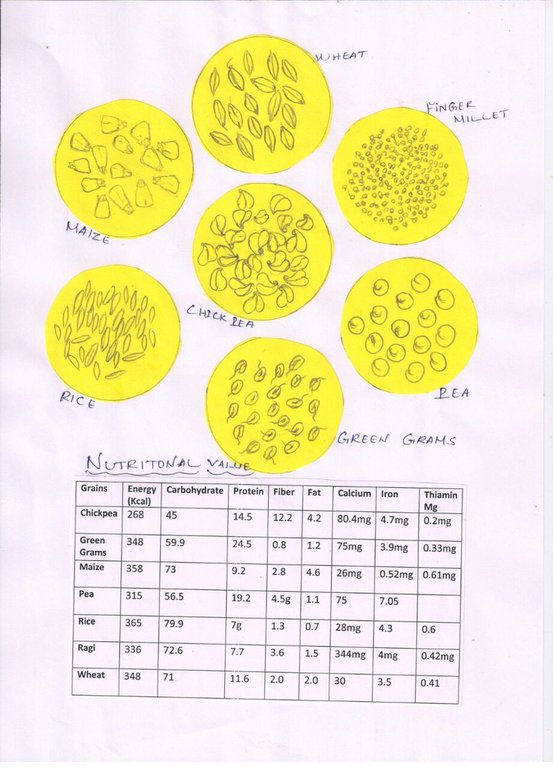Multigrain Nutrient Ball [印度]
- 创建:
- 更新:
- 编制者: MARIA ROSELIN
- 编辑者: Nicole Stolz, Boris Orlowsky
- 审查者: Boris Orlowsky, Alexandra Gavilano, Deborah Niggli
Horlicks Laddoo
technologies_731 - 印度
查看章节
全部展开 全部收起1. 一般信息
1.2 参与该技术评估和文件编制的资源人员和机构的联系方式
有助于对技术进行记录/评估的项目名称(如相关)
Book project: where people and their land are safer - A Compendium of Good Practices in Disaster Risk Reduction (DRR) (where people and their land are safer)有助于对技术进行记录/评估的机构名称(如相关)
CARITAS (Switzerland) - 瑞士1.3 关于使用通过WOCAT记录的数据的条件
(现场)数据是什么时候汇编的?:
02/11/2016
编制者和关键资源人员接受有关使用通过WOCAT记录数据的条件。:
是
1.4 所述技术的可持续性声明
这里所描述的技术在土地退化方面是否存在问题,导致无法被认为是一种可持续的土地管理技术?:
否
1.5 请参阅有关SLM方法的问卷

Fighting malnutrition by promoting locally produced horlicks (multigrain … [印度]
Multigrain nutritional ball to ght malnutrition and improve the health of rural communities especially during and after disasters like floods (and droughts).
- 编制者: MARIA ROSELIN
2. SLM技术的说明
2.1 技术简介
技术定义:
Introducing a multigrain flour to prevent malnutrition of rural communities, enhancing community resilience to natural disasters such as floods.
2.2 技术的详细说明
说明:
The multigrain flour can be used to produce both "nutritional balls" and "energy drinks". The multi-grain flour is composed of 7 grains, namely raw rice, wheat, finger millet (raggie), green grams, maize, chick pea (channa) and pea. These grains are rich in vitamins and minerals.
Preparation: Equal quantities of the grains of wheat, finger millet (raggie), green grams, maize, channa and pea are soaked seperately in water for 24 hours. After being soaked well, they are tied in a soft wet cotton cloth for 1 or 2 days until sprouts come out of the grain. Once the sprout is out, the grains are dried in the sun and afterwards fried separately one by one. After being fried, the husk is removed from channa, pea and green grams. Finally all grains together are grounded in a grinding mill. Once the flour is ready, as part of the value addition process, ghee and smashed jaggery (unrefined brown sugar made from sugar cane or palm tree) are added and mixed thoroughly. If needed, 100 grams of raisins and cashew nuts can be added to the products for garnishing. After mixing them well, the powder can either be kept as it is or shaped like balls.
The process of dry roasting keeps the nutritional value intact and leads to a longer shelf life. The rich content of vitamins, minerals and carbohydrates makes the nutritional balls particularly valuable for children, adolecent and pregnant women, preventing malnutrition. They are as well suitable for people suffering from diabetics, if consumed without sugar.
The prime objective of the Technology is eliminating anemia among the rural poor, especially among women and children and make them self sufficient. It can also be an additional source of income, once people become aware of the high nutrient level and begin buying the product.
The nutritional ball, locally named "Horlicks laddoo", has a particularly high nutritional value and is promoted to the rural communites in the target villages of the NGO "Nirmal Mahila Kalyan Kendre" (NMKK), especially for women and children. It is also used as an energy drink, especially for children, preventing malnutrition.
2.3 技术照片
2.4 技术视频
注释、简短说明:
Production of Horlicks Laddoo
摄影师的名字:
Ranjan
2.5 已应用该技术的、本评估所涵盖的国家/地区/地点
国家:
印度
区域/州/省:
BIHAR
有关地点的进一步说明:
Town - Darbhanga
Map
×2.6 实施日期
注明实施年份:
2003
2.7 技术介绍
详细说明该技术是如何引入的:
- 通过项目/外部干预
注释(项目类型等):
During the implementation of Community Health Education Development (CHED) project, this Technology was introduced. The CHED project found through village assessment malnutrition as a major problem in the rural community. So in order to reduce malnutrition, workshops and training were organized for the women to introduce this technology.
3. SLM技术的分类
3.1 该技术的主要目的
- 降低灾害风险
- 减缓气候变化及其影响
- It helps in prevention of malnutrition among women and children
3.4 该技术所属的SLM组
- 收割后的措施
3.5 技术传播
具体说明该技术的分布:
- 均匀地分布在一个区域
如果该技术均匀地分布在一个区域上,请注明覆盖的大致区域。:
- 10-100 平方千米
注释:
it is spread in villages in different regions of Bihar
3.6 包含该技术的可持续土地管理措施

其它措施
注释:
Post harvest conservation technology only indirectly related to land
3.7 该技术强调的主要土地退化类型
3.8 防止、减少或恢复土地退化
具体数量名该技术与土地退化有关的目标:
- 不适用
4. 技术规范、实施活动、投入和成本
4.1 该技术的技术图纸
4.2 技术规范/技术图纸说明
Ingredients:
Maize - 1Kg
Wheat -1Kg
Green Grams -1Kg
Finger Millet -1Kg
Rice - 1Kg
Chick pea -1Kg
Pea - 1Kg
Glucose powder - 500gm
Jaggery (unrefined brown sugar made out of sugar cane or palm tree) -3 Kg
For preparation instructions, refer to the main description.
4.3 有关投入和成本计算的一般信息
具体说明成本和投入是如何计算的:
- 每个技术单元
指定单位:
8Kg of nutritious multi-grain flower
其它/国家货币(具体说明):
Rupees
注明美元与当地货币的汇率(如相关):1美元=:
67.0
4.4 技术建立活动
| 活动 | 措施类型 | 时间 | |
|---|---|---|---|
| 1. | Preparation of the food balls | 其它措施 | whenever |
4.5 技术建立所需要的费用和投入
| 对投入进行具体说明 | 单位 | 数量 | 单位成本 | 每项投入的总成本 | 土地使用者承担的成本% | |
|---|---|---|---|---|---|---|
| 劳动力 | Grinding Charge | 1Kg | 8.0 | 5.0 | 40.0 | 100.0 |
| 设备 | Vessels | 8 | 8.0 | 120.0 | 960.0 | 100.0 |
| 设备 | Cotton Cloth | 7Pcs | 4.0 | 148.0 | 592.0 | 100.0 |
| 设备 | Tharpolin | 1Pc | 1.0 | 1500.0 | 1500.0 | 100.0 |
| 植物材料 | Pulses (Chick Pea,Pea,Green grams) | 3Kg | 3.0 | 120.0 | 360.0 | 100.0 |
| 植物材料 | Grains (Wheat,Maize, Ragi,Rice) | 4Kg | 3.0 | 30.0 | 90.0 | 100.0 |
| 植物材料 | Packing Polythin | 1Kg | 1.0 | 200.0 | 200.0 | 100.0 |
| 技术建立所需总成本 | 3742.0 | |||||
4.8 影响成本的最重要因素
描述影响成本的最决定性因素:
Investment costs
5. 自然和人文环境
5.1 气候
年降雨量
- < 250毫米
- 251-500毫米
- 501-750毫米
- 751-1,000毫米
- 1,001-1,500毫米
- 1,501-2,000毫米
- 2,001-3,000毫米
- 3,001-4,000毫米
- > 4,000毫米
指定年平均降雨量(若已知),单位为mm:
1142.30
农业气候带
- 半湿润
5.2 地形
平均坡度:
- 水平(0-2%)
- 缓降(3-5%)
- 平缓(6-10%)
- 滚坡(11-15%)
- 崎岖(16-30%)
- 陡峭(31-60%)
- 非常陡峭(>60%)
地形:
- 高原/平原
- 山脊
- 山坡
- 山地斜坡
- 麓坡
- 谷底
垂直分布带:
- 0-100 m a.s.l.
- 101-500 m a.s.l.
- 501-1,000 m a.s.l.
- 1,001-1,500 m a.s.l.
- 1,501-2,000 m a.s.l.
- 2,001-2,500 m a.s.l.
- 2,501-3,000 m a.s.l.
- 3,001-4,000 m a.s.l.
- > 4,000 m a.s.l.
说明该技术是否专门应用于:
- 不相关
5.3 土壤
平均土层深度:
- 非常浅(0-20厘米)
- 浅(21-50厘米)
- 中等深度(51-80厘米)
- 深(81-120厘米)
- 非常深(> 120厘米)
土壤质地(表土):
- 中粒(壤土、粉土)
土壤质地(地表以下> 20厘米):
- 细粒/重质(粘土)
表土有机质:
- 高(>3%)
5.4 水资源可用性和质量
地下水位表:
5-50米
地表水的可用性:
过量
水质(未处理):
不良饮用水(需要处理)
水的盐度有问题吗?:
否
该区域正在发生洪水吗?:
是
5.5 生物多样性
物种多样性:
- 低
栖息地多样性:
- 高
5.6 应用该技术的土地使用者的特征
定栖或游牧:
- 定栖的
生产系统的市场定位:
- 生计(自给)
非农收入:
- 低于全部收入的10%
相对财富水平:
- 非常贫瘠
个人或集体:
- 个人/家庭
机械化水平:
- 手工作业
性别:
- 女人
土地使用者的年龄:
- 中年人
- 老年人
5.7 应用该技术的土地使用者拥有或租用的平均土地面积
- < 0.5 公顷
- 0.5-1 公顷
- 1-2 公顷
- 2-5公顷
- 5-15公顷
- 15-50公顷
- 50-100公顷
- 100-500公顷
- 500-1,000公顷
- 1,000-10,000公顷
- > 10,000公顷
这被认为是小规模、中规模还是大规模的(参照当地实际情况)?:
- 小规模的
注释:
Women were preparing multigrain nutrient flour at small scale for the family use.
5.8 土地所有权、土地使用权和水使用权
土地所有权:
- 个人,未命名
- 个人,有命名
土地使用权:
- 租赁
- 个人
用水权:
- 租赁
- 个人
5.9 进入服务和基础设施的通道
技术援助:
- 贫瘠
- 适度的
- 好
市场:
- 贫瘠
- 适度的
- 好
能源:
- 贫瘠
- 适度的
- 好
道路和交通:
- 贫瘠
- 适度的
- 好
金融服务:
- 贫瘠
- 适度的
- 好
6. 影响和结论性说明
6.1 该技术的现场影响
社会经济效应
收入和成本
收入来源的多样性
社会文化影响
健康状况
生态影响
减少气候和灾害风险
洪水影响
6.2 该技术的场外影响已经显现
Improved health condition of women and children
有关影响评估的意见:
Improved health condition of women and children
6.3 技术对渐变气候以及与气候相关的极端情况/灾害的暴露和敏感性(土地使用者认为的极端情况/灾害)
注释:
not applicable
6.4 成本效益分析
技术收益与技术建立成本相比如何(从土地使用者的角度看)?
短期回报:
积极
长期回报:
非常积极
技术收益与技术维护成本/经常性成本相比如何(从土地使用者的角度看)?
短期回报:
积极
长期回报:
积极
6.5 技术采用
- 10-50%
如若可行,进行量化(住户数量和/或覆盖面积):
100HHs -200HHs
在所有采用这项技术的人当中,有多少人是自发地采用该技术,即未获得任何物质奖励/付款?:
- 90-100%
注释:
For some years, this technology was adopted by the health network leaders who applied it in their daily diet whenever necessary.
6.6 适应
最近是否对该技术进行了修改以适应不断变化的条件?:
否
6.7 该技术的优点/长处/机会
| 土地使用者眼中的长处/优势/机会 |
|---|
|
1. Multi grain nutrient ball is particularly meant for pregnant women and lactacting mother 2. It helps to fight against malnutrition of children 3. It is rich in vitamins , minerals and energy 4. It keeps the body cool and prevents indigestion, too 5. During disaster situations, especially floods, this will serve as a balanced nutrition 6. It can also be consumed by persons with diabetic as a porridge |
| 编制者或其他关键资源人员认为的长处/优势/机会 |
|---|
|
1. This can be included in the regular diet of rural women and children as they are suffering from anemia and undernourishment 2. It can provide alternative income generation, e.g. when improving the product with little investment 3. It can be included in the flood preparedness list of dry foods and utilized during flood |
6.8 技术的弱点/缺点/风险及其克服方法
| 土地使用者认为的弱点/缺点/风险 | 如何克服它们? |
|---|---|
|
1. People prefer horlicks from market over homemade horlicks due to ecessive time requirement of the preparation 2. Drastic price increase of grains especially for pulses in recent years in India 3. Ignorance of nutritional value of the product 4. Low appreciation of local products |
1. Awareness raising within the community regarding the technology 2. Grain and pulses that are produced by the health network leaders can be exchanged within the networks or sold at moderate rates 3. Some success stories /case studies have to be made visible to the community regarding the benefits of Horlicks laddoo 4. Training on Entrepreneurship must be given to the women |
| 编制者或其他关键资源人员认为的弱点/缺点/风险 | 如何克服它们? |
|---|---|
|
1. People do not want to try it / practice it 2. Marketing availability is one of the key issue 3. Lack of Business orientation among the women |
1. Group of interested women has to be motivated to initiate this technology 2. Organization must facilitate market availability till the product gets public attraction 3. Women must be given Entrepreneurial skill |
7. 参考和链接
7.1 信息的方法/来源
- 与土地使用者的访谈
15
- 与SLM专业人员/专家的访谈
4
链接和模块
全部展开 全部收起链接

Fighting malnutrition by promoting locally produced horlicks (multigrain … [印度]
Multigrain nutritional ball to ght malnutrition and improve the health of rural communities especially during and after disasters like floods (and droughts).
- 编制者: MARIA ROSELIN
模块
无模块


